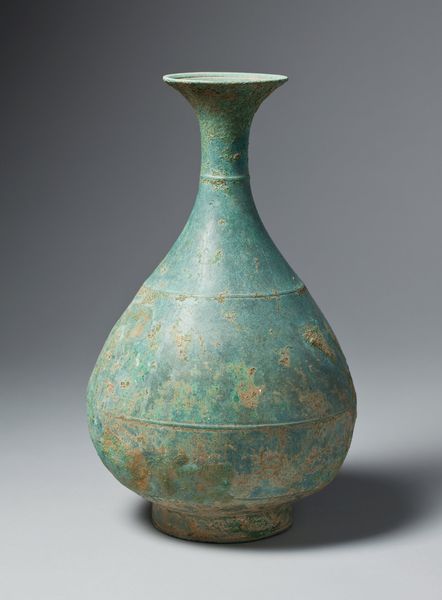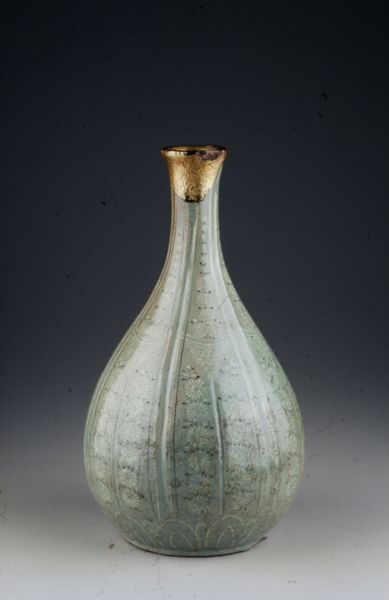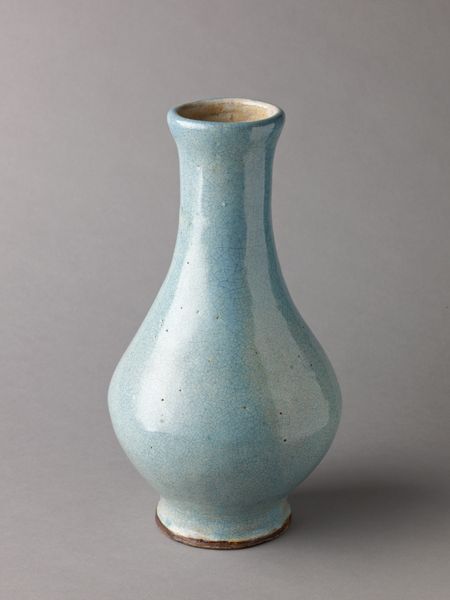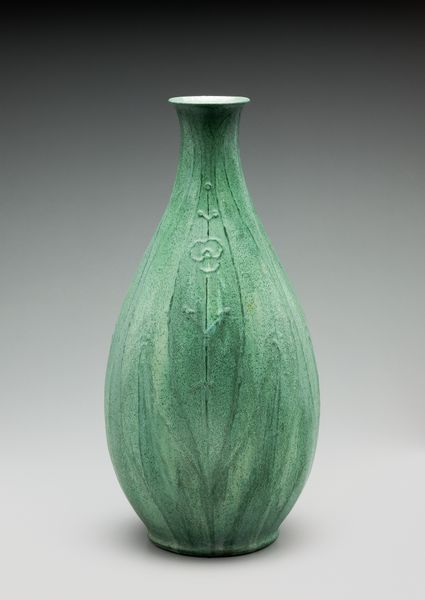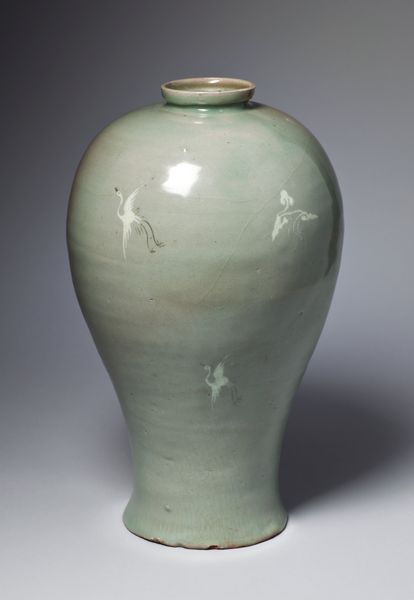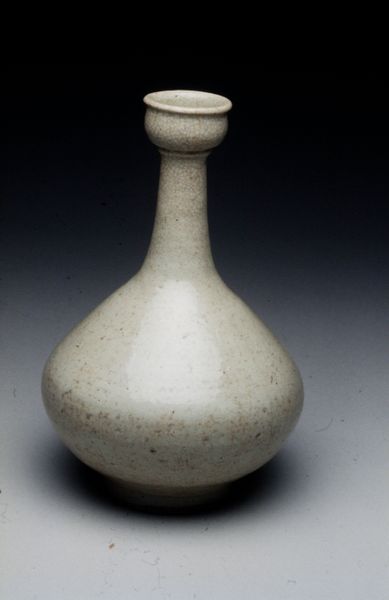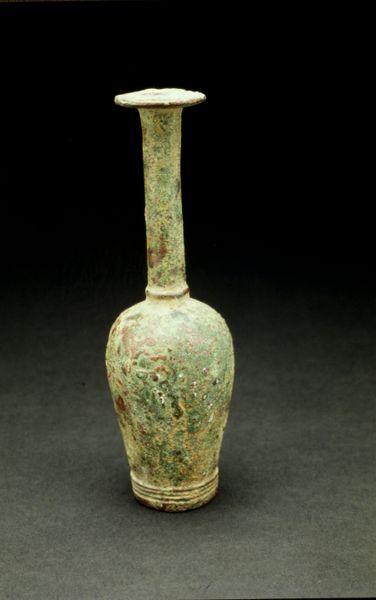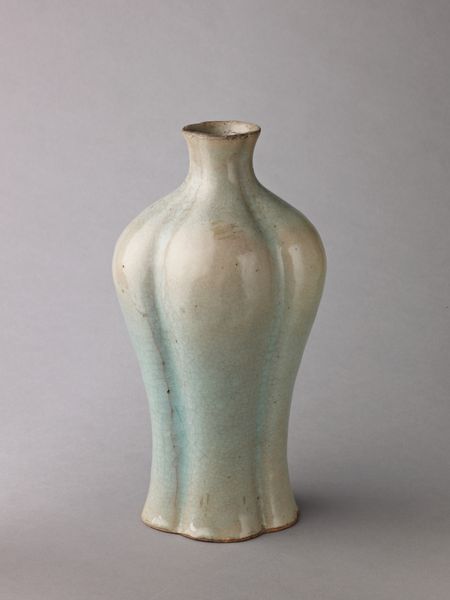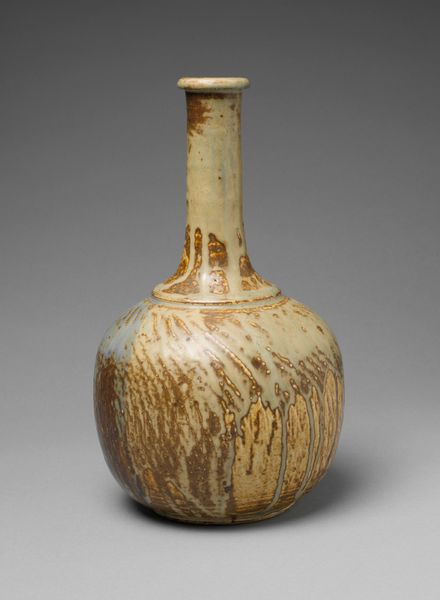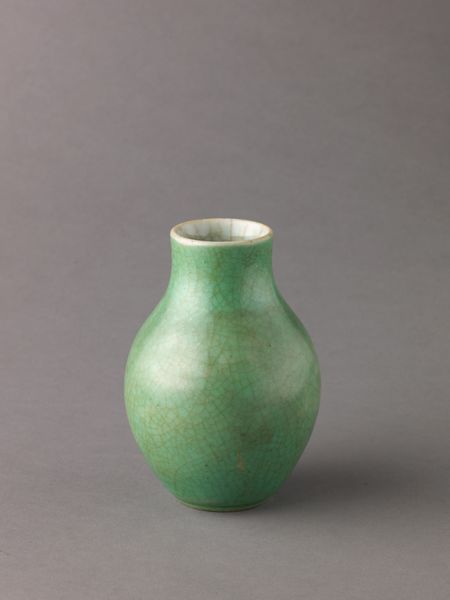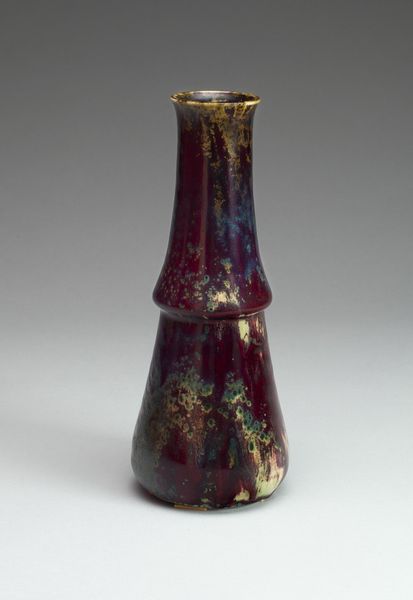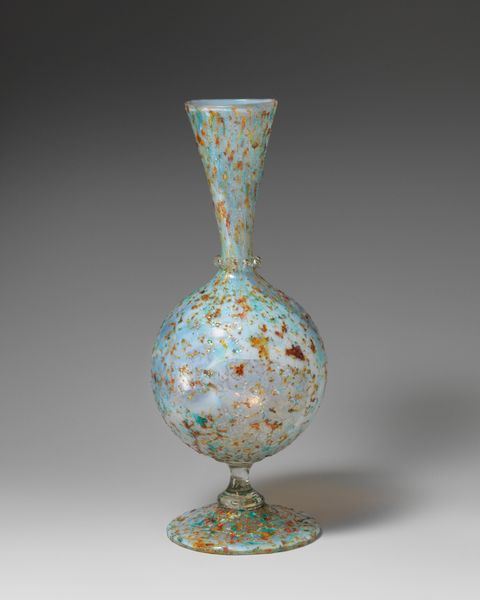
ceramic, sculpture
#
art-nouveau
#
ceramic
#
form
#
sculpture
#
ceramic
#
decorative-art
Dimensions: 18 1/4 x 8 5/8 in. (46.4 x 21.9 cm)
Copyright: Public Domain
Editor: So, this is a ceramic vase from the Grueby Pottery, created somewhere between 1894 and 1904. I’m struck by its slightly melancholic blue-green hue. What’s your take on it? Curator: Melancholy is a fantastic observation. The Grueby Pottery really mastered these matte glazes, didn't they? Think of the American Arts and Crafts movement blooming then, rejecting industrial clamor for handcrafted beauty, earthy tones. This vase feels like a hushed poem amidst all that noise. I keep imagining how satisfying it would be to hold—to trace the lines that run up and down its form. Almost like veins in a leaf. What kind of tactile sense does it conjure up for you? Editor: That’s beautiful—a hushed poem. It feels cool and smooth, almost like a river stone worn down by time. I wonder, though, was this simplicity a conscious choice, given the more elaborate designs of the time? Curator: Absolutely. Remember, Art Nouveau was all about organic forms and intricate details, yet Grueby streamlined it. There’s a deliberate quietness here, a striving for purity. Do you think that restraint makes it more or less powerful? Editor: That's a great point. Perhaps more powerful. It makes you focus on the shape itself. It is very pleasing and also austere, isn't it? The colour contributes so much, I think. Curator: Yes. And notice how that understated palette highlights its sculptural qualities. Form becomes paramount. Its usefulness, maybe almost secondary. Editor: I've never thought about decorative art that way, especially from a usefulness perspective. Curator: Well, sometimes the most useful art... nourishes our souls, no? Thanks for pointing that out to me. I learned a bit from you on that.
Comments
No comments
Be the first to comment and join the conversation on the ultimate creative platform.
